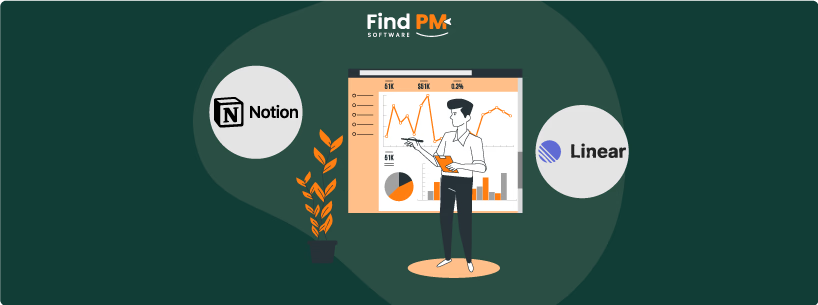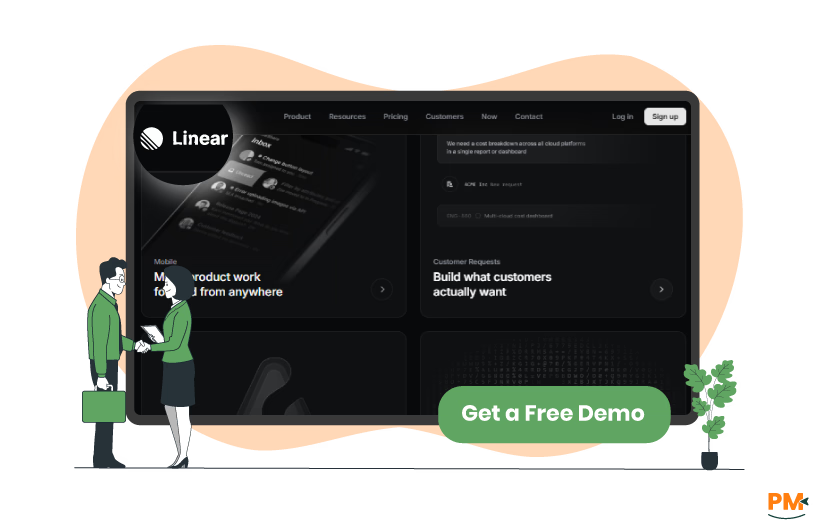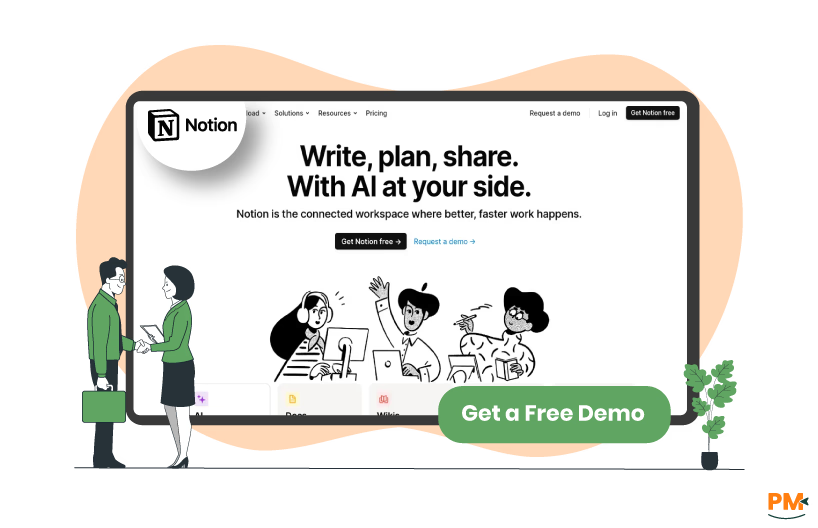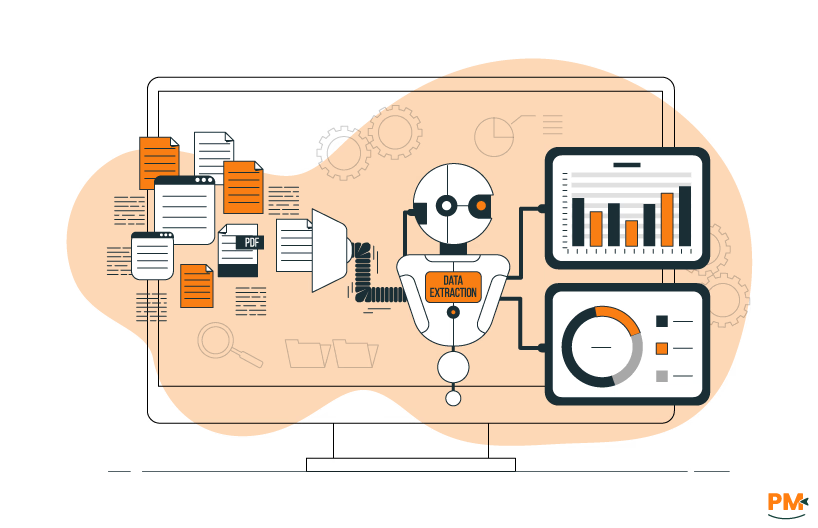
Managing projects today means more than just ticking off tasks. Teams need tools that fit how they plan, collaborate, and deliver results. Some groups work best with tightly structured workflows that keep everyone aligned, while others thrive in flexible environments where notes, documents, and tasks all live together.
This is where Linear and Notion take different paths. Linear is designed with speed and clarity in mind, giving product and engineering teams a focused system for handling issues, sprints, and roadmaps. Notion, by contrast, offers an all-in-one workspace that blends project tracking with documentation and collaboration, making it adaptable across industries and team sizes.
In this comparison, we’ll compare Linear vs Notion and explore how each platform approaches project management and which one may be the better fit for your needs.

Feature | Linear | Notion |
Tasks And Workflow | Issues, cycles, triage, milestones; focused on agile workflows | Databases, boards, templates, filters; adaptable to any workflow |
Customer Support
| Email support, contact form, docs and resources | Help Center, guides, email support, and sales contact |
Collaboration Functionality | Comments, project visibility, shared dashboards | Real-time editing, comments, mentions, permissions |
Ease of Use And UI | Minimalist, fast, designed for clarity | Clean, flexible, customizable views (tables, boards, timelines) |
File Sharing Capabilities | Files or docs attached within issues or projects and contextual sharing | Built-in file & media support with page or database-level permissions |
Automation | Product Intelligence, status workflows, auto-close or archive | Database automations, buttons, workflow templates |
Pricing | Free ($0), Basic ($10/user/month), Business ($16/user/month), Enterprise (custom) | Free ($0/member/month), Plus ($12/member/month), Business ($24/member/month), Enterprise (custom) |
Best For | Startups, product, and engineering teams | Individuals, cross-functional teams, and enterprises needing flexibility |
TL; DR: Linear is the stronger choice for engineering-focused teams that value speed and structure, while Notion works best for teams wanting flexibility and an all-in-one workspace.

Linear is a product development platform created to help software teams plan, track, and ship products with speed and clarity. Its foundation is built around issues for day-to-day tasks, projects and initiatives for structured planning, and roadmaps for long-term visibility. Cycles simplify sprint execution, while triage and customizable views keep incoming work and ongoing priorities aligned in real time.
With Product Intelligence, Linear incorporates AI-driven suggestions and automation to reduce manual overhead, while features like ‘Customer Requests’ and ‘Linear Asks’ connect external feedback and internal requests directly into the workflow.
The platform is designed for engineers, product managers, and design teams who prefer a fast, opinionated system over complex customization. Linear stands out for its opinionated approach to workflow: it’s less about heavy customization and more about providing a clean, ready-to-use structure for engineering and product teams. With integrations into GitHub, GitLab, Slack, Figma, and other commonly used tools, Linear connects smoothly into the software development ecosystem.
Pros And Cons Of Linear
Pros | Cons |
Clean and intuitive interface makes tracking tasks and progress simple helps teams stay aligned, improving visibility of project status Offers structured project management with full visibility through initiatives, projects, and issues | Navigating between different cycles and views can be confusing initially Desktop app sometimes stuck, and may require manual restart |

Notion is an all-in-one workspace designed to let people think, write, and plan in one place. It combines note-taking, task management, and project tracking so teams and individuals can organize work the way they prefer. The platform is built on databases, where every entry can be customized with properties such as status, dates, and tags, and displayed as a table, board, calendar, list, or timeline for different views of the same information. Collaboration is a core element: users can comment, share pages, and mention teammates to keep discussions tied directly to content. Notion also provides templates for projects, tasks, meetings, and knowledge hubs, giving teams a quick way to start building systems without beginning from scratch.
With the introduction of artificial intelligence (AI) directly into the workspace, the platform adds intelligent assistance for drafting, summarizing, and automating workflows. By combining flexibility, real-time collaboration, and intelligent assistance, Notion positions itself as a versatile platform for individuals, teams, and organizations to manage both everyday tasks and large-scale projects.
Pros And Cons Of Notion
Pros | Cons |
AI features support organization and help automate routine writing or task creation Databases, boards, and templates provide strong organization tools to maintain clarity in workflows Great collaboration features allow smooth page sharing and real-time teamwork with colleagues | Can feel slow when opening heavy, database-filled pages New users may find it overwhelming at first because of the many features and options |
Tasks And Workflow Management

Linear
Linear structures workflow around issues, projects, and cycles, giving teams a focused system to manage daily execution. Tasks are created as issues, which can be prioritized, discussed, and tracked in real time. A triage feature ensures that new or unplanned work, such as bug reports or feature requests, is reviewed before being added to active cycles, keeping the team’s planned workload intact. For sprint-style planning, Linear provides cycles, which organize issues into short, time-bound periods, helping teams stay aligned and measure velocity. Progress is visible through milestones and project tracking, with views available as boards or lists depending on preference. This structured approach allows product and engineering teams to manage ongoing work without losing sight of long-term initiatives.
Notion
Notion approaches tasks and workflows with flexibility, using customizable databases that support properties such as status, assignees, and due dates. These databases can be viewed in different formats, including boards, calendars, tables, and timelines, so teams can adapt workflows to match their preferred style. Ready-made templates for projects and tasks provide a quick starting point; while filtering and sorting options allow users to focus only on the most relevant items, such as tasks due this week or work assigned to a specific teammate. Collaboration is built in, with updates and edits visible in real time, ensuring that teams always work from the same information. Additionally, Notion includes automations and buttons that help streamline repetitive tasks, making it easier to keep workflows moving smoothly.
Customer Support

Linear
Linear provides customer support primarily through direct contact channels and documentation. Users can reach the support team by submitting a request through the official support form or by email. In addition, the documentation hub offers detailed guides to help teams understand and implement features without needing direct assistance. For onboarding, demos, or general inquiries, Linear also provides a dedicated, ensuring that customers have multiple pathways to resolve issues or learn more about the product.
Notion
Notion delivers support through a comprehensive Help Center that includes articles, tutorials, and guides to cover a wide range of use cases. Users can also contact the team directly via email, which is listed within the Help resources. For organizations with more advanced needs, Notion provides a contact sales page, allowing teams to request personalized guidance for deployment and scaling. The support framework is designed to combine self-service learning with direct communication, so users can quickly access the level of assistance that best matches their situation.
Collaboration Functionality

Linear
Linear’s collaboration is embedded in its design for product teams: team members can create, discuss, and track issues together, using features like comments and shared project visibility. The platform offers durable dashboards and insights that are shareable among team members to keep everyone aligned. It also supports real-time context by allowing users to see progress across initiatives, projects, and cycles, so stakeholders can observe project health and upcoming work. These collaboration tools are intended to streamline communication in development workflows and keep all relevant participants informed.
Notion
Notion supports extensive collaboration through sharing and permissions: pages and databases can be shared with team members or guests, with configurable permission levels ensuring people see exactly what they need. The workspace allows multiple people to view and edit the same page simultaneously in real time, and profile cues show where collaborators are working. There are features like comments, mentions, reactions, and reminders to facilitate communication and follow-ups across team content. Moreover, notification/inbox tools help users stay informed about updates in shared pages and projects.
Ease Of Use And UI

Linear
Linear recently went through a significant UI redesign aimed at reducing visual noise and improving navigation. The redesign refined elements like the sidebar, tabs, headers, and panels to enhance clarity, emphasize hierarchy, and improve how users move through the app. These changes are intended to make navigation more cohesive and help teams stay focused on product development rather than UI friction.
Notion
Notion presents a clean and minimal workspace aimed at reducing complexity while remaining flexible. Its interface is page-based, where users can freely organize content. It is supported by databases that can be viewed in different formats, tables, boards, calendars, or timelines, to match personal preferences. This adaptable design makes it approachable for beginners while still offering depth for advanced users.
File Sharing Capabilities

Linear
Linear does not emphasize native file-sharing as a core feature. It focuses primarily on managing issues, projects, and documentation within a unified workspace. Files and specs are typically added as part of project documentation or issue details, allowing teams to keep all related information in context.
While the platform emphasizes centralization of tasks and project content, it does not provide dedicated file-sharing features such as granular permissions or large media management. Teams needing richer document collaboration or dedicated file handling may need to rely on external tools integrated alongside Linear, making file sharing more of a contextual add-on than a standalone capability.
Notion
Notion provides native file sharing that integrates directly into its workspace. Users can upload and embed files such as documents, images, audio, or video within pages, or attach them to tasks using the files and media property in databases. This allows projects, notes, and resources to remain centralized instead of scattered across separate tools. Access can be controlled through sharing and permissions, where teams decide who can view, comment, or edit content.
Although these features support most collaboration scenarios, Notion is designed primarily as a productivity and knowledge platform rather than a dedicated file management system. For teams handling very large files or advanced version control, external storage tools may still complement its built-in sharing.
Automation

Linear
Linear incorporates automation into its workflows through features like ‘Product Intelligence’, which uses AI to suggest labels, detect duplicates, and route new issues efficiently. The platform also supports workflow automations tied to issue statuses, such as automatically closing or archiving tasks once conditions are met. In addition, user preferences allow small automations, like assigning new issues to yourself or syncing progress with connected development branches. These capabilities reduce manual effort and keep tasks moving through the pipeline without constant intervention, though Linear positions automation mainly around issue and project workflows rather than broader cross-platform processes.
Notion
Notion brings automation into its workspace through database automations, where triggers (such as a status change) can automatically launch actions like assigning teammates or updating fields. It also offers buttons, which let users generate new content, create pages, or update databases with a single click. For repetitive work, Notion provides workflow and automation templates that help teams set up repeatable systems quickly. These features streamline routine work, though for highly complex automation needs, teams often connect Notion to external tools for extended functionality.
Linear Pricing
Plans | Price | Key Features |
Free | $0 |
|
Basic | $10/user/month |
|
Business | $16/user/month |
|
Enterprise | Custom pricing |
|
Notion Pricing
Plans | Price | Key Features |
Free | $0/member/month |
|
Plus | $12/member/month |
|
Business | $24/member/month |
|
Enterprise | Custom pricing |
|
Disclaimer: The pricing is subject to change.
Linear positions itself as a modern tool for teams that want a fast, focused way to manage projects. Its structure around issues, cycles, and roadmaps makes it especially appealing to product and engineering groups that need clarity without unnecessary complexity.
It is best suited for:
Linear is an ideal choice for teams that prioritize speed, focus, and structured workflows in a product development environment.
Notion is designed as an all-in-one workspace that blends notes, tasks, projects, and collaboration. Its flexibility allows it to adapt to both personal productivity and complex organizational workflows, making it a tool that appeals across different team sizes and industries.
It is best suited for:
Notion is ideal for those who value flexibility, customization, and a unified platform for managing both individual work and team collaboration.
Based on the factors discussed above, the choice between Linear and Notion depends on the type of team and project needs.
- Linear comes out on top for product and engineering teams that prioritize speed, structured workflows, and minimal distraction in agile environments
- Notion, on the other hand, performs better for teams seeking a flexible, all-in-one platform that combines project tracking with documentation and collaboration across departments
In final verdict, Linear is the stronger performer for focused software development teams, while Notion is the better choice for cross-functional groups that value customization and breadth.
Alternatives To Linear
If Linear doesn’t fully meet your needs, here are some strong alternatives to consider:
Alternatives To Notion
If Notion’s all-in-one model doesn’t fit your team, these alternatives may be better:
These alternatives will give your teams more options to explore if Linear or Notion don’t align perfectly with their project management needs.
